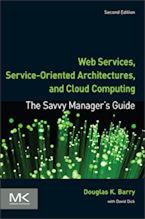A Better DBMS Matrix
I believe we'd be better served by a change in the vertical axis of the DBMS Matrix. Handling queries is not a valid way to classify DBMSs. Many DBMSs handle queries, including relational, object, and object-relational. Navigation performance is a way to classify DBMSs. If we draw a new matrix taking navigation into consideration, a clearer, more accurate picture results, as shown in the following figure. By the way, it is assumed that all DBMSs in this matrix handle queries. Nevertheless, I have noted this in the left axis just so there is not mistaking this fact.

This matrix indicates that if you have a business need for high performance on complex data, you should be looking at ODBMSs. It is terribly wrong to discount ODBMSs based on the erroneous idea that they do not handle queries. It is more accurate to see that they handle queries and provide high performance navigation for complex data -- often, that navigation involves queries.
Context for A Better DBMS Matrix
Related Articles for A Better DBMS Matrix
Author
Douglas K Barry
Principal
You may use this material for your work or classes. Reprint Policy. Be sure to check the menu at the left for other articles available on this site.
The Savvy Manager's Guide
Douglas K Barry is also the author of a book that explains Web Services, service-oriented architecture, and Cloud Computing in an easy-to-understand, non-technical manner.
Web Services, Service-Oriented Architectures, and Cloud Computing: The Savvy Manager's Guide (Second Edition)
by Douglas K Barry with David Dick
This is a guide for the savvy manager who wants to capitalize on the wave of change that is occurring with Web Services, service-oriented architecture, and—more recently—Cloud Computing. The changes wrought by these technologies will require both a basic grasp of the technologies and an effective way to deal with how these changes will affect the people who build and use the systems in our organizations. This book covers both issues. Managers at all levels of all organizations must be aware of both the changes that we are now seeing and ways to deal with issues created by those changes.

